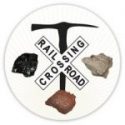More extensive resources and information about the Birmingham Mineral Railroad and other historic railroads in the Birmingham area can be found at locations such as the following:
Cartographic Research Laboratory at the University of Alabama website
Birmingham Rails website
Holdings of the Birmingham Public Library–both digital and hard copy
Jefferson County Historical Association
Heart of Dixie Railroad Museum
Holdings of the Alabama Department of Archives and History
Louisville and Nashville Historical Society
EXCELLENT ON-LINE USGS HISTORIC MAPS OVERLAY TOOL:
If you are interested in overlaying historic maps onto current maps, the United States Geological Survey has provided an excellent resource for doing that. Many of the historic maps that can be overlaid at that website show the Birmingham Mineral Railroad (usually as “L & N Railroad”), and the overlaying capability will enable you to see where it ran in relation to present-day maps. Visit the USGS Historical Topographic Map Explorer website at http://historicalmaps.arcgis.com/usgs/ Listed below are INSTRUCTIONS for using that online map overlay tool.
Shortened link: http://historicalmaps.arcgis.
B. You can zoom in closer using the mouse wheel or pan around to find a specific location. You can move the map around with the mouse (or your finger if you are using an iPad, but transparency does not work on older iPads). You also can zoom in or out to help find a location using the mouse wheel (or finger-pinching on an iPad).
C. When you click on the map at a spot on the map you want to view (or tap a spot with your finger on an iPad), red cross-hairs will appear. To change to another spot, just click (or tap) on that new spot.
D. After you get the red cross-hairs, all the old maps they have available to overlay for the location where your red cross-hairs are will be listed along the bottom.
E. If you click (or tap) on one of those maps, it will overlay it, and you can change the transparency with the slider bar next to the map image on the left side of the screen. (As noted above, transparency may not work on older iPads.)
F. You may have to pick and choose different old maps to get the one with the best scale for the site you are inquiring about.
G. If you are tracing a railroad route and come to the edge of the historic topo map, continue on to the next historic topo map by clicking (or tapping) on the area past the edge of the former topo map, then choose again from the new list at the bottom.
NOTE:
Some of the older (1800’s) maps may not be as accurate for some areas as are current USGS maps; the historic maps after 1900 generally are more accurate. In some instances, the older maps were not well geo-referenced. They provide good information, but the features on the maps may not line up exactly with today’s features. The very old maps are fine for using, but you may need to mentally shift them a little to line up with known features on the current map (for example, the route of a creek on an older map may be shifted a little from its true current course).
